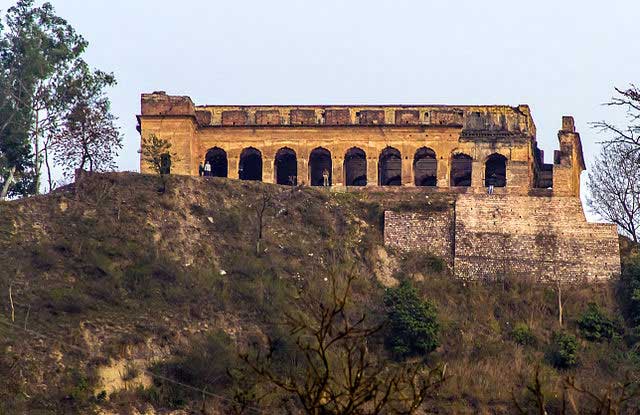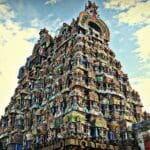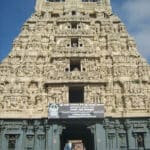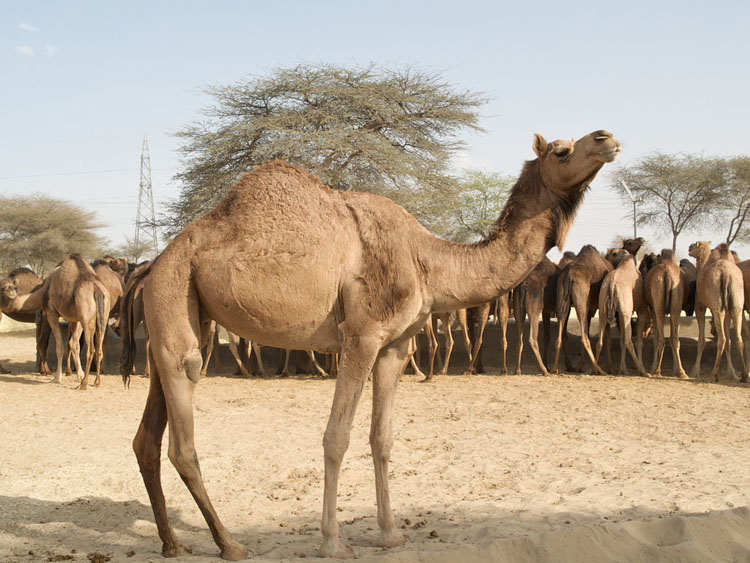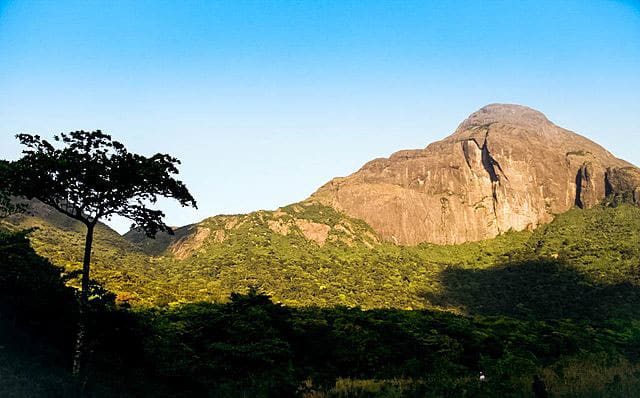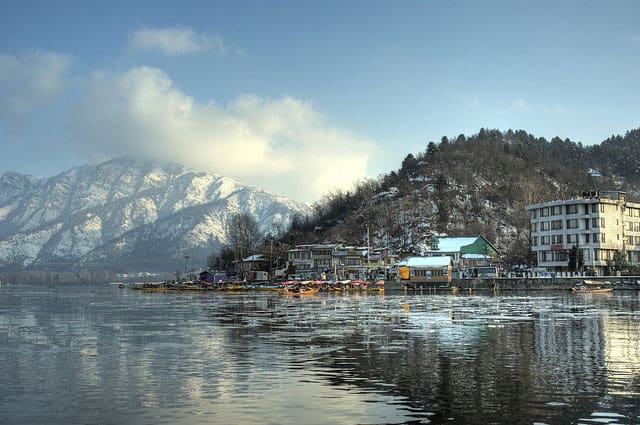Perched high in the hill ranges of Hamirpur district (Places To Visit In Hamirpur), Deotsidh is synonymous with the legend of Baba Balak Nath Ji, believed to be an incarnation of Lord Kartikeya. Ancient scriptures such as the Skanda Purana mention the region’s divine relevance, where Balak Nath is said to have performed deep meditation. Pilgrims travel from across India to seek blessings, believing that sincere prayers here bring spiritual progress and worldly fulfillment.
Architecture and Temple Complex
The temple complex is a blend of rustic charm and sanctity. The main cave temple, carved into the mountainside, remains inaccessible to women in adherence to deeply rooted traditions; however, special areas are allocated for their prayer. Bells, flowers, and incense line the complex, while the air vibrates with devotional chants.
-
Cave Temple: This natural cavern is the sanctum sanctorum, housing a sacred idol where devotees offer rot, coconut, and sweets.
-
Surrounding Shrines: Numerous smaller shrines to Shiva, Durga, and local deities fostering a rich, syncretic atmosphere.
-
Langar Hall: A large dining facility offering free, hygienic community meals symbolizing equality and selfless service.
Festivals and Seasonal Splendor
The Chaitra Mela during March-April draws lakhs of devotees. The mountain comes alive with vibrant stalls, folk music, and rituals. Even outside festival times, the site pulses with daily worship and serene forest silence—ideal for meditation, reflection, and immersion in nature.
Exploring the Natural Beauty
-
Pine Forests: Lush green forest trails ideal for walks, yoga, and connecting with Himalayan biodiversity.
-
Wildlife Encounters: Local macaques, songbirds, and butterflies dot the trails.
-
Sunrise Vistas: Early mornings are gifted with panoramic views of the mist-laden valleys, often described as ethereal.
Visitor Experience
It is advisable to start the ascent in early morning for pleasant weather and fewer crowds. Devotees suggest purchasing offerings from local stalls, supporting the region’s economy. Well-marked paths, clean facilities, and gentle locals ensure that both seasoned pilgrims and first-time visitors feel welcome.
2. Sujanpur Tira – Imperial Grandeur, Art, and Living Heritage
Origin Story and Historical Significance
Sujanpur Tira is the illustrious legacy of the Katoch dynasty. Rising to prominence under Raja Sansar Chand, Sujanpur served as a political, cultural, and artistic epicenter during the 18th-19th centuries. The town’s name—Sujanpur (from ‘Sujan’ meaning wise) and Tira (meaning fort)—reflects its dual nature as both a seat of learning and a military citadel.
The Ancient Tira Fort
The Sujanpur Tira Fort, covering an expansive hill plateau overlooking the river Beas, stands as a silent sentinel of bygone glory:
-
Frescoed Halls: Intricate frescos adorn halls and ceilings, depicting Hindu mythology and courtly life.
-
Secret Passages and Watchtowers: Marvel at the clever defense architecture—concealed corridors, turrets, and lookout towers.
-
Royal Baths and Palaces: Now in ruins, yet echoing with stories of opulence, artistic patronage, and royal assemblies.
Temple Circuit Within and Around the Fort
-
Narvdeshwar Temple: Renowned for wall paintings, sculptural artistry and its atmospheric courtyard. The temple is also a hub during Shivratri, bringing processions and traditional drama performances.
-
Murli Manohar Temple: Home to exquisite idols and lively Krishna Janmashtami festivities.
-
Gauri Shankar and Sita Ram Temples: Important for their history and local stonework.
Festivals and Social Mosaics
-
The Holi festival in Sujanpur Tira is unrivaled, attracting thousands for its boisterous, week-long celebration blending music, garba dances, dramatic Ramleela performances, and gastronomy.
-
Dussehra transforms the fort complex into a theatre of mythological re-enactments.
Recreation and Adventure
The massive ‘Chaugan’ (open field) is not just a relic but hosts cultural fairs, state functions, sports tournaments, and, lately, paragliding camps. The riverbanks nearby facilitate angling, boating, and tranquil riverside walks in the midst of untouched wilderness.
Artisan Markets
Local bazaars brim with Himachali handicrafts—handwoven carpets, woollen shawls, silver jewelry, and clay figurines. Each market trip offers a slice of Hamirpur’s living tradition.
3. Nadaun – Riverside Legends and Cultural Crossroads
A Fusion of Nature and History
Nadaun’s quiet elegance hides stories of epic battles (notably, the 1691 Battle of Nadaun), royal retirements, and spiritual milestones. The town is flanked by the shimmering Beas River, drawing nature lovers, pilgrims, and historians.
Nadaun Palace – Royal Retreat
Constructed for Maharaja Sansar Chand, the palatial complex displays Rajput artistry. Even in modest ruins, it narrates tales of royal summers, secret meetings, and the mingling of Mughal, Sikh, and Rajput influences. Fountains and gardens, though faded, still retain their symmetrical charm.
Sikh Heritage – Sri Gurudwara Sahib Nadaun
A spiritual lighthouse, the Gurudwara commemorates Guru Gobind Singh Ji, who sojourned here after the iconic battle. Annual melas see significant Sikh gatherings, kirtans, and the sharing of ‘langar’—epitomizing equality and hospitality.
The Battle of Nadaun
Historical markers dot the riverbank—a testament to the fierce struggle between Sikh-Mughal alliances. Interpretative boards and local guides reconstruct the valorous past.
Recreational and Ecological Experiences
-
Boating: Glide along gentle river currents, watching kingfishers dive for fish and villagers go about their daily routines.
-
Nature Walks: Follow river trails shaded by willows, alive with migratory birds and wildflowers.
-
Fishing and Picnics: Designated spots offer safe, sustainable fishing and family-friendly picnic opportunities.
-
Night Camping: Spring and monsoon are ideal for riverside camping; listen to the song of the Beas beneath star-lit skies.
Cultural Life
Nadaun’s open-air market sells local produce—organic honey, mountain herbs, and home-loomed textiles. The slow pace, friendly smiles, and rhythmic boat oars give Nadaun a meditative grace.
Beyond the Top 3: Additional Gems of Hamirpur
-
Awah Devi Temple: Towering over a deep gorge, the temple is shrouded in fog and local lore. Trekking paths, sacred shrines, and spellbinding sunsets make it worth the climb.
-
Gasota Mahadev Temple and Bil-kaleshwar Temple: Both ancient, both flanked by ancient cedar forests and bubbling mountain springs. These venues are havens for solitude, prayer, and quiet picnic mornings.
Colorful Tapestry: Festivals, Arts, and Culinary Riches of Hamirpur
Festivals
-
Nati Dance and Jhamakada Drums: Village squares become stages for folk performances every festival season.
-
Processions, Pahari Food Stalls, and Craft Fairs: Immerse yourself in local celebration—sample traditional dishes, bargain for crafts, and enjoy impromptu storytelling sessions by elders.
Fine Cuisine
-
Savor Siddu (steamed bread with ghee), Madra (legume curry), Chana Madra, and Babru for an authentic Himachali treat.
-
Sweets like meetha bhat and chhang (native beer) bring the meal to a close.
Shopping & Craftsmanship
Markets in Hamirpur town and Sujanpur Tira offer:
-
Intricately woven Pashmina shawls, handspun Himachali woolens.
-
Carved wooden trinkets and clay idols.
-
Organic products: fruit preserves, wild forest honey, mountain spices.
Travel Essentials and Tips
-
Best Seasons: March–April and October offer the most vibrant festivals and ideal climate. Monsoons (July–September) are lush but check for landslide advisories; winters are gentle, rarely seeing snow.
-
Stay Options: Ranging from government-run rest houses, mid-range hotels in Sujanpur, to character-rich family homestays near Deotsidh and Nadaun. Booking ahead during festivals is wise.
-
Getting Around: The region features good road connectivity—buses are frequent, cabs and autos easy to hire. For remote temples, enjoy short, scenic hikes.
-
Respects Customs: Cover heads in temples and gurudwaras. Women must follow designated prayer zones in Deotsidh.
-
Sustainability: Carry reusable water bottles, avoid single-use plastics, and support local economies.
Comprehensive FAQs – Places To Visit In Hamirpur
-
What is unique about Hamirpur compared to other Himachali towns?
Hamirpur offers less crowded, more authentic experiences blending history, spirituality, art, and nature. -
Which site is most suitable for family visits?
Sujanpur Tira and Nadaun are both family-friendly, with spacious grounds and easy accessibility. -
Can adventure enthusiasts find activities here?
Yes, Sujanpur’s Chaugan hosts paragliding, while Nadaun and Beas River support boating, angling, and riverside camping. -
What’s the transport connectivity like?
Hamirpur is accessible via well-maintained highways. Local buses, taxis, and auto-rickshaws are common. -
Is vegetarian food widely available?
Yes, all temples serve vegetarian Langar, and most restaurants offer a variety of vegetarian dishes. -
How safe is Hamirpur for foreign tourists?
The region is safe, hospitable, and accustomed to travelers. Respect for local culture is appreciated. -
Do I need permits for temple entry?
No permits for Indian citizens. International travelers should carry passports for hotel check-ins. -
How many days are ideal for a Hamirpur exploration?
3–4 days will allow a thorough, unrushed itinerary. -
Is English spoken widely?
Most townsfolk and service personnel know basic English, especially in bigger markets and hotels. -
Are pets allowed at tourist sites?
Some open-air sites allow pets, but not inside temples and most hotels. -
Can I participate in local festivals?
Tourists are welcome to join in Holi, Chaitra Mela, and food fairs. -
Is Wi-Fi easily available?
Most hotels provide Wi-Fi; mobile network coverage is good in most populated areas. -
What about healthcare facilities?
Hamirpur district hospital and several private clinics offer medical assistance. -
Are guides necessary or available?
Not essential, but local guides can be hired at forts, palaces, and main temples. -
Can you day-trip to Kangra or Dharamshala from Hamirpur?
Yes, both Kangra and Dharamshala can be reached within 2–3 hours for day trips.


